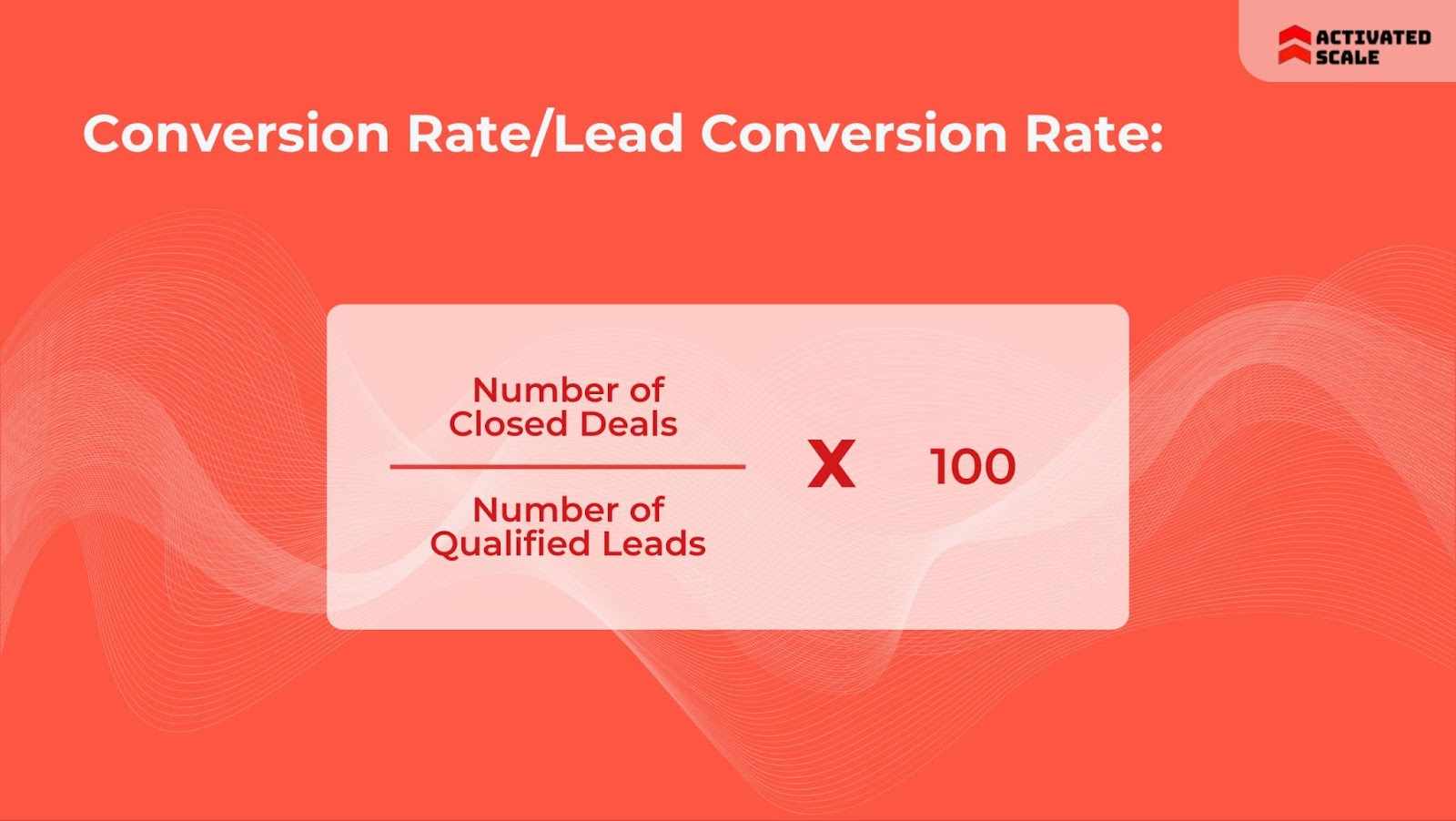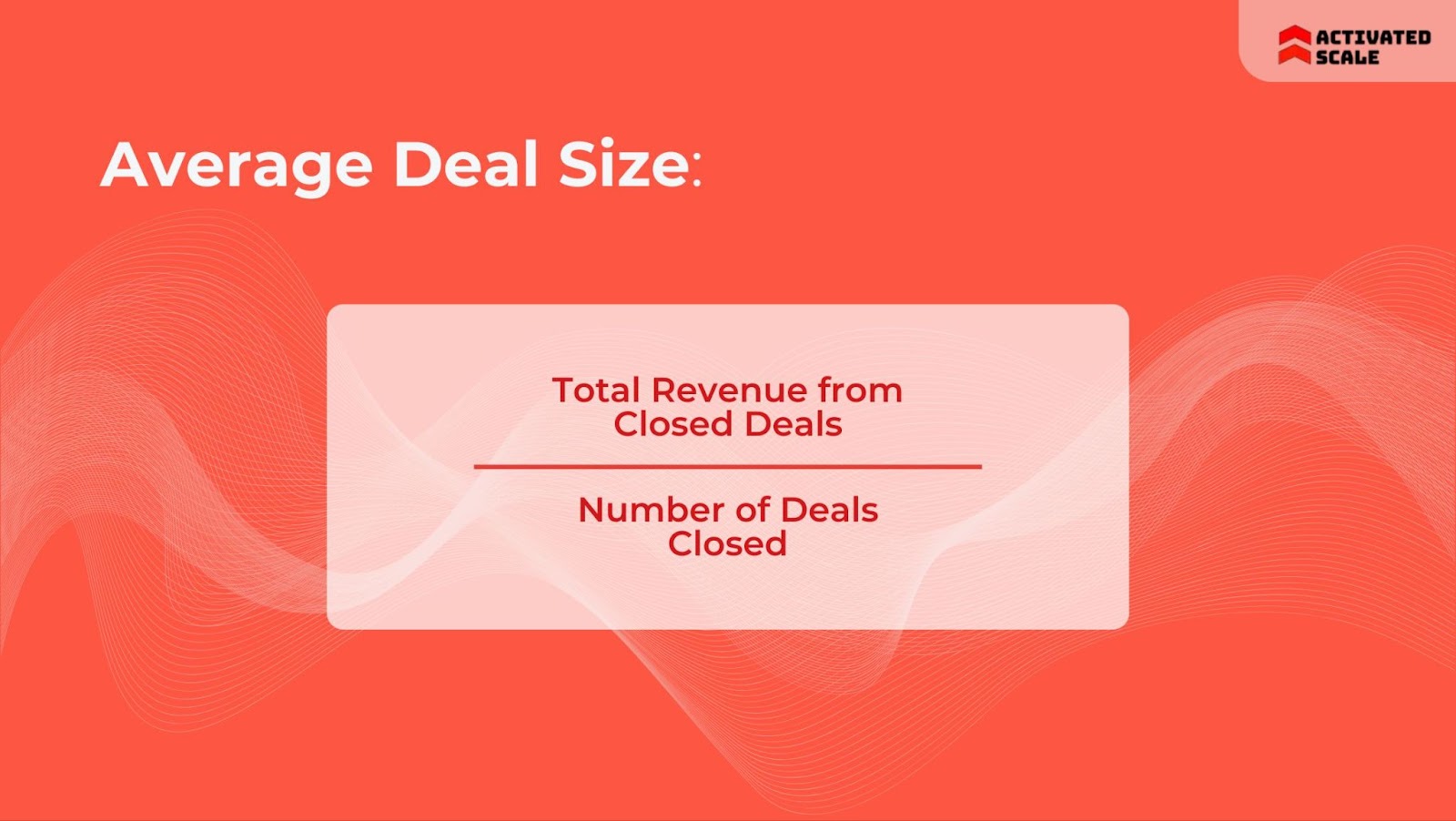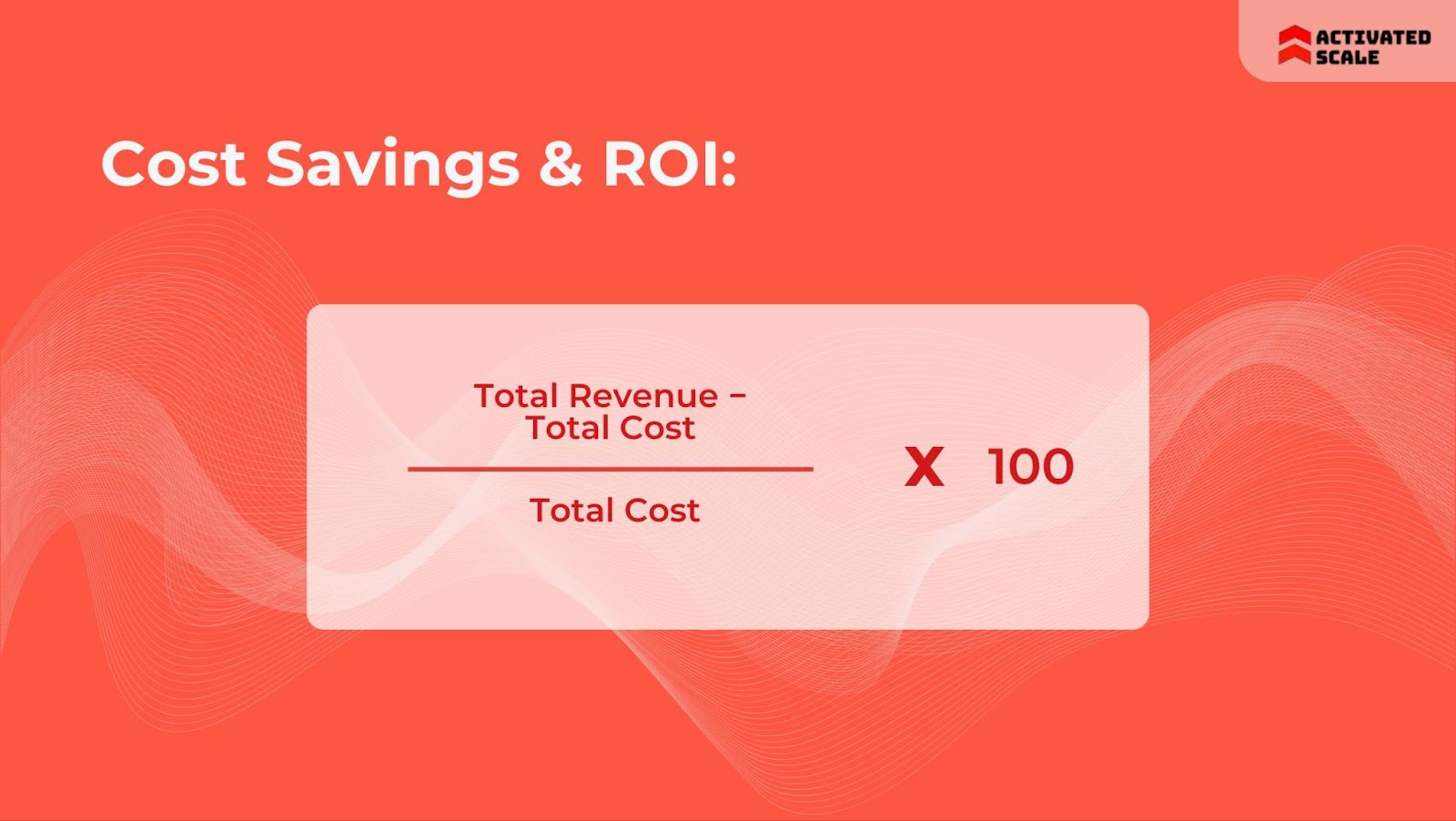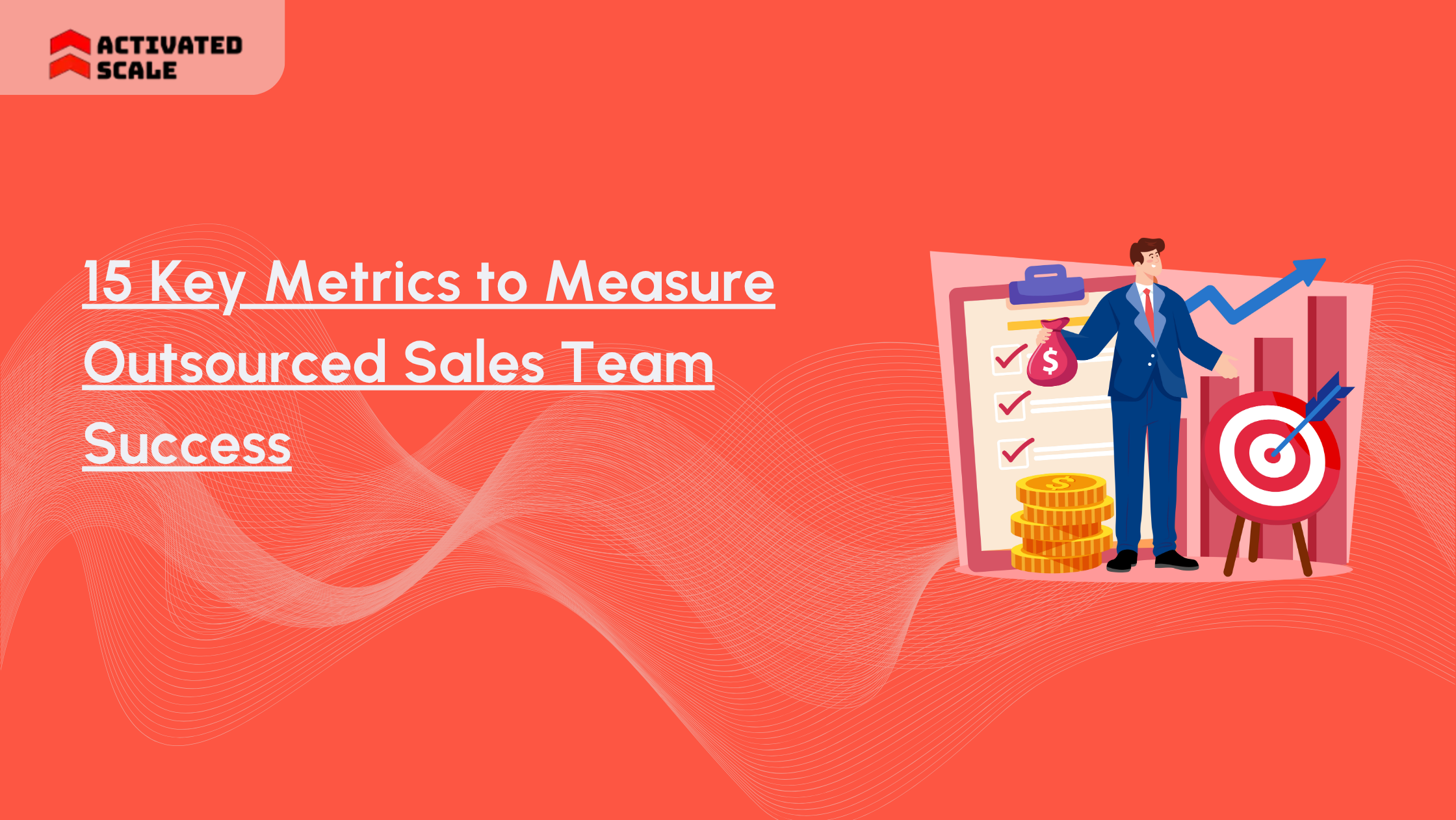Outsourcing sales can speed up pipeline generation. However, speed without structure often leads to wasted spending. Many companies struggle to gauge performance clearly once sales move outside their walls.
Since 2022, 68% of U.S. businesses have outsourced at least one business service. However, most of them felt that tracking external team success is their biggest challenge. That stat hits close to home for most founders and sales leaders.
In this blog, you’ll learn why aligning on the right KPIs matters. If you're unsure how to measure sales retention in outsourced teams, this guide lays it all out clearly.
What You Need to Know
- Track metrics across performance, activity, and retention, not just top-of-funnel numbers.
- Use formulas like Win Rate = Closed Deals / Total Opportunities to track conversion accuracy.
- High ramp time or low account executive (AE) retention usually signals onboarding or leadership gaps.
- Quality metrics like proposal accuracy and revision rate matter as much as call volume.
- Set benchmarks, review weekly, and hold external teams to the same standards as internal ones.
Why is Tracking Key Sales Metrics Critical?
You can't improve what you don't track. That’s especially true when your sales team isn’t sitting in the same room. Most founders expect outsourced reps to deliver quick results, but without proper tracking, outcomes stay vague. You won’t know what’s working or where deals are stalling.
That’s where learning how to measure sales retention in outsourced teams becomes essential. It helps you assess return on investment (ROI), spot drop-offs, and refine messaging. They align external reps with your internal goals to offer insight into customer behavior, sales funnel leaks, and lead quality.
Tracking performance is a shared accountability layer between you and your sales partner. Metrics help you focus on what matters most: performance, quality, and retention.
Also Read: 10 Strategies to Generate Sales Leads for Your Business
How to Measure Sales Retention in Outsourced Teams?
If you're trying to measure sales retention in contracted teams, start with these 15 key performance metrics (KPIs).
Each one offers a practical view into your outsourced team’s effectiveness, so you can lead with clarity and scale with confidence.
The list of 15 key performance metrics to measure sales retention in external teams is:
1. Conversion Rate/Lead Conversion Rate

A high-performing outsourced team should consistently turn qualified leads into paying customers. However, not all conversion issues stem from low effort. Many arise from poor qualifications or misaligned targeting.
Understanding sales retention starts with tracking the percentage of leads that close. This metric reveals how well your team is pitching, handling objections, and following up.
Formula:
Conversion Rate = (Number of Closed Deals ÷ Number of Qualified Leads) × 100
Keep funnel stages well-defined inside your CRM. Review lead sources and check if messaging aligns with buyer intent. If conversion is low, your team may be pushing unqualified leads too early or misreading signals during discovery.
2. Sales Cycle Length
Some deals take days. Others stretch for weeks with no real movement. An average sales cycle length is 45 days. Without visibility into time spent per deal, you’ll struggle to predict or scale.
You must track how long it takes reps to move leads from first contact to close. Long cycles can point to delays in follow-ups, unclear buyer intent, or poor qualification.
Formula:
Sales Cycle Length = Total Number of Days to Close All Deals ÷ Number of Deals Closed
Track this by reviewing CRM timestamps and stage histories. Shorter cycles typically signal stronger buyer alignment and better execution. Train your team to qualify early, handle objections upfront, and avoid dragging unqualified leads across stages.
3. Lead Response Time
The longer a lead waits, the colder it gets. Fast follow-ups often separate deals won from deals lost. Generally, a lead response time should not exceed 5 minutes.
Many external teams lose momentum simply because they don’t respond fast enough. A faster response shows discipline and signals seriousness to the buyer.
Formula:
Lead Response Time = Total Time Taken to Respond to Leads ÷ Number of Leads Responded To
Set clear service level agreements (SLAs) for lead handling. Use Slack alerts or email triggers to reduce the lag between contact and reply.
Need help with faster follow-ups? Activated Scale’s Fractional Selling model gives you trained SDRs who act fast, so no lead goes cold.
4. Customer Acquisition Cost (CAC) / Cost per Acquisition (CPA)
Outsourcing should improve efficiency, not burn budget. However, if you’re spending more to close fewer deals, the model isn’t working.
CAC helps you track how much you’re really paying to win each customer. It tells you if your external team is selling efficiently or just creating noise.
Formula:
CAC = Total Sales and Marketing Cost ÷ Number of New Customers Acquired
Include tools, salaries, agency fees, and commissions in your cost calculation. Review this monthly to catch rising expenses early. Align spending with deal value and retention rates to stay profitable.
5. Sales Pipeline Value/Growth
A shallow pipeline limits future revenue. You can’t scale if your team isn’t building enough qualified opportunities.
Part of learning sales retention in external teams is tracking both pipeline size and deal value. It shows whether your team is filling the funnel with real potential or just noise.
Formula:
Pipeline Value = Sum of All Open Deal Values
Pipeline Growth = (Current Pipeline Value − Previous Period Value) ÷ Previous Period Value × 100
Track this weekly. Flag deals stuck too long or lacking next steps. Prioritize qualified leads and coach reps to maintain healthy deal flow.
6. Average Deal Size

A low average deal size could mean poor targeting or missed upsell opportunities. If reps are closing small, inconsistent deals, your revenue goals suffer.
Bigger deals usually come from better-fit leads and stronger rep engagement. Let’s say the average deal size for an enterprise can go up to $50,000.
Formula:
Average Deal Size = Total Revenue from Closed Deals ÷ Number of Deals Closed
Segment by channel, rep, or lead source. If your top reps close larger deals, review their approach. Use consultative selling and package offers to lift value.
Need help refining sales approach or deal packaging? Hire from Activated Scale’s Fractional Sales Leadership service to build stronger offers and drive revenue per deal.
7. Win Rate
A low win rate means reps are chasing leads that never convert. That wastes time and skews forecasts.
Formula:
Win Rate = (Number of Closed-Won Deals ÷ Total Opportunities) × 100
Compare win rates by lead source and rep. Typically, a win rate of 50% or higher is considered good. If strong-fit leads aren’t converting, review pricing, messaging, or proposal timing. Low rates often point to weak discovery or poor qualification.
8. Customer Retention Rate
Closing a deal is only the start. If customers leave after one purchase, your growth isn’t real.

One way to master measuring sales retention in contracted teams is to track who comes back and who doesn’t.
Formula:
Customer Retention Rate = ((Customers at End of Period − New Customers) ÷ Customers at Start of Period) × 100
Look for drop-offs during onboarding or after the first renewal. Retention reveals the quality of fit and how well reps set expectations upfront.
9. Net Promoter Score (NPS) / Customer Satisfaction (CSAT)
Unhappy customers don’t renew. They also don’t refer. Measuring sentiment helps you understand where the experience falls short. NPS and CSAT provide a long-term view of impact.
NPS Formula:
NPS = % Promoters − % Detractors
CSAT Formula:
CSAT = (Number of Satisfied Customers ÷ Total Responses) × 100
Use surveys after onboarding or key milestones. Combine scores with deal size and retention data for a fuller picture.
10. Activity Metrics
Busy doesn’t always mean productive, but tracking effort helps surface issues earlier. Low output often signals deeper problems with motivation or workflow.
You’ll need these to fully understand how your outsourced team spend time on calls, emails, and demos.
Common Metrics:
- Number of Calls/Emails per Rep: Total outbound efforts made by each rep per day or week.
- Demo-to-Close Ratio: Percentage of product demos that result in a closed deal.
- Follow-Up Frequency: Average number of follow-ups sent per lead. Helps spot drop-offs and inconsistency.
Set clear activity targets per role. Review drop-offs between stages.
Need reps who actually put in the work? Use Contract-to-hire Sales Recruiting Service from Activated Scale professionals who are vetted for consistency before going full-time.
11. Quality of Leads Generated
Flooding your pipeline with bad leads kills productivity. Reps spend time chasing deals that will never close. You must track lead fit and intent, not just volume.
How to Evaluate:
- MQL to SQL Conversion Rate: Percentage of marketing-qualified leads that become sales-qualified.
- Lead-to-Opportunity Rate: Shows how many leads turn into real pipeline opportunities.
- Bounce/Disqualification Rate: Measures leads rejected due to poor fit or bad data.
Audit lead sources weekly. Filter out low-fit segments. Focus on intent data, firmographics, and previous buyer behaviors to improve targeting.
12. Cost Savings & ROI

Outsourcing should save money, but only if results justify the cost. High spend with low ROI means you're scaling the wrong way.
Formula:
ROI = (Total Revenue − Total Cost) ÷ Total Cost × 100
Factor in agency fees, tools, and any onboarding hours. Pair ROI analysis with win rates and CAC to validate your outsourced model.
13. Productivity & Efficiency Metrics
Sales are about output. Measuring how much gets done per hour or rep reveals real team performance.
If you want to know how your external team works, start by tracking completion rates and response speed.
Key Metrics:
- Tasks Completed per Rep: Number of assigned sales tasks marked as done.
- Average Resolution Time: Time taken to close out tasks or handle prospect questions.
- Calls or Emails per Hour: Measures outreach efficiency and rep workload.
Use time tracking or CRM timestamps. Spot delays or lags across roles. Reassign or retrain where output drops.
14. Quality of Work & Error Rate
Not every task should be measured by speed. Mistakes lead to lost deals and reputation damage. That’s why you need accuracy along with speed and precision.
Key Metrics to Track:
- Error Rate: Percentage of errors per deliverable or data entry item.
- Revision Rate: How often work needs to be redone or edited.
- Proposal Accuracy: Share of proposals sent with no formatting or pricing issues.
Review sample deliverables weekly. Build checklists to reduce errors. Use QA tools like Gong (call reviews) or Avoma (conversation insights) to monitor quality over time.
15. Turnover & Retention of Outsourced Team
High rep churn drains momentum. Each exit means lost context, retraining, and pipeline stalls. To master sales retention, track rep tenure, and engagement.
Metrics to Watch:
- Turnover Rate: Number of reps who left in a month divided by total team size.
- Average Tenure: How long reps stay on your account before exiting.
- Rep Engagement Scores: Feedback scores from pulse surveys or performance reviews.
Use 1:1s or pulse surveys to track sentiment. Stable teams lead to better forecasting and stronger customer experience.
Measuring outsourced sales performance goes beyond revenue. Accuracy, consistency, and engagement all matter. Use the right metrics to catch red flags early and coach for improvement.
Conclusion
Outsourcing sales can drive real growth if you know how to measure it right. Tracking vanity metrics won’t tell you what’s working. You need clear indicators across performance, quality, and retention to get the full picture.
The best external sales leaders use this data not just to report, but to improve. They coach based on outcomes. They refine playbooks. They scale what works. Most importantly, they hold external partners accountable, just like internal reps.
Looking to build a high-performance outsourced sales team with real accountability? Book a call with Activated Scale and get expert support across strategy, execution, and analytics.
FAQs
- How often should I review outsourced sales KPIs?
Weekly reviews help you catch trends early, especially for activity metrics and conversion rates. Monthly reviews are better for pipeline quality, deal size, and retention KPIs. - What’s a good ramp-up time for outsourced SDRs or AEs?
For sales development representatives (SDRs), 2–4 weeks is typical. AEs may take 6–8 weeks, depending on deal complexity. Track learning milestones, not just early output. - Should I share my internal KPIs with the outsourcing partner?
Yes. Alignment on success criteria ensures accountability. Share key benchmarks so outsourced reps know what great performance looks like.
How do I benchmark performance if I’m outsourcing for the first time?
Start with industry averages or ask your partner for historical data. Over time, your own baseline data becomes more valuable for comparison.
The Ultimate Guide to Hiring a Salesperson!
Get the step-by-step guide to hiring, onboarding, and ensuring success!
_edi.png)




